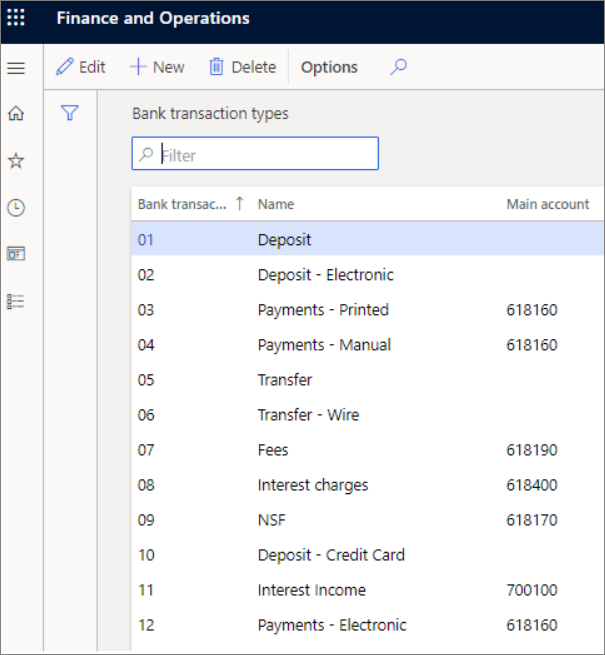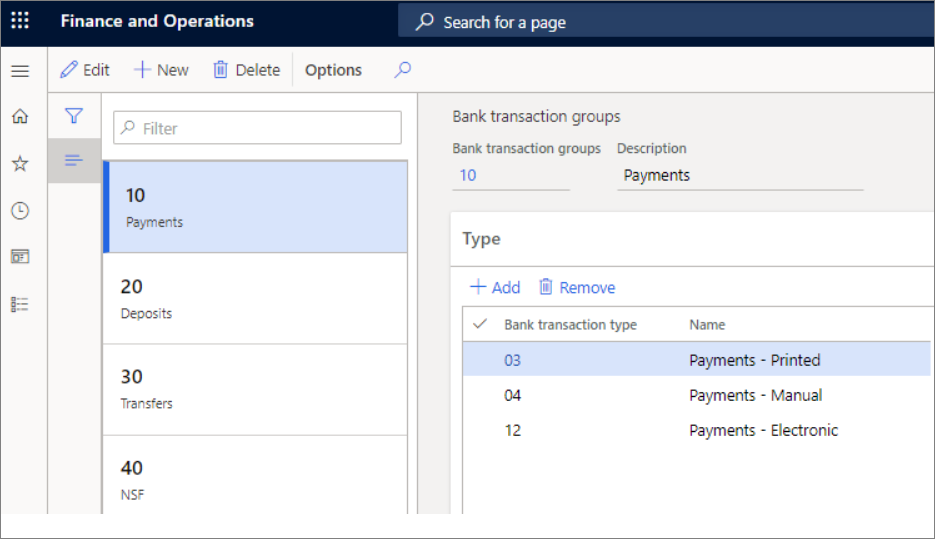Understand bank transaction types and groups
Bank transaction types
To understand why transaction types are important, while configuring a bank for a company, consider the following scenario.
Scenario
The bookkeeper at Adventure Works Cycles International, must set up the banking functions for a new company. The bookkeeper first sets up the types of transactions Adventure Works Cycles must make, such as deposits and withdrawals. They then group these transaction types to allow for an additional level for reporting and analysis. Next, the bookkeeper sets up bank groups for the banks with whom the company holds multiple accounts. They then create payment purpose codes for reporting to the central bank. The bookkeeper indicates which account is used for checks returned from the bank and the number series that is used for banking documents. Finally, after they finish setting up the banking functions, they enter the information for the company's bank accounts and indicates, for each account, how checks are to be designed.
This scenario not only provides a real-life example of a requirement, but also prepares you, as a functional consultant to assist Annie, with a scenario that is a requirement identified as part of your gathering information.
The first step is getting to know more about bank transaction types. You can use bank transaction types to set up the types of transactions to be made in company bank accounts, such as deposit slips, fees, and interest charges.
Cash and bank management > Setup > Bank transaction types

If the bank reports transactions on its account statements, companies can use a summation of the transaction types for summary reconciliation.
Users can indicate the transaction type on journal worksheets. When the journal is recorded, the application copies the contents of the Bank transaction type field to the bank transaction.
You need to create one transaction type for non-sufficient funds (NSF) transactions. NSF transactions occur when a check is returned from the bank because the bank account lacks sufficient funds to honor the check.
NSF is used to identify returned payments. When the bank returns a payment, the NSF identifier automatically cancels the payment from the system. It also marks the payment so that it is not selected when you reconcile the bank account.
NSF transactions also assist credit and collections users in recording the NSF and applying an additional fee that is charged by the bank towards the customer account.
Bank transaction groups
Bank transaction groups help you set up groups of different bank transaction types. In the bank statement reconciliation, you can calculate totals for each bank transaction group and for each bank transaction type.
Cash and bank management > Setup > Bank transaction groups

For example, a group of transfers might include the bank transaction types of Transfer and Wire transfer.
For more information about various payment methods see Accounts payable payment methods and Accounts receivable payment methods.